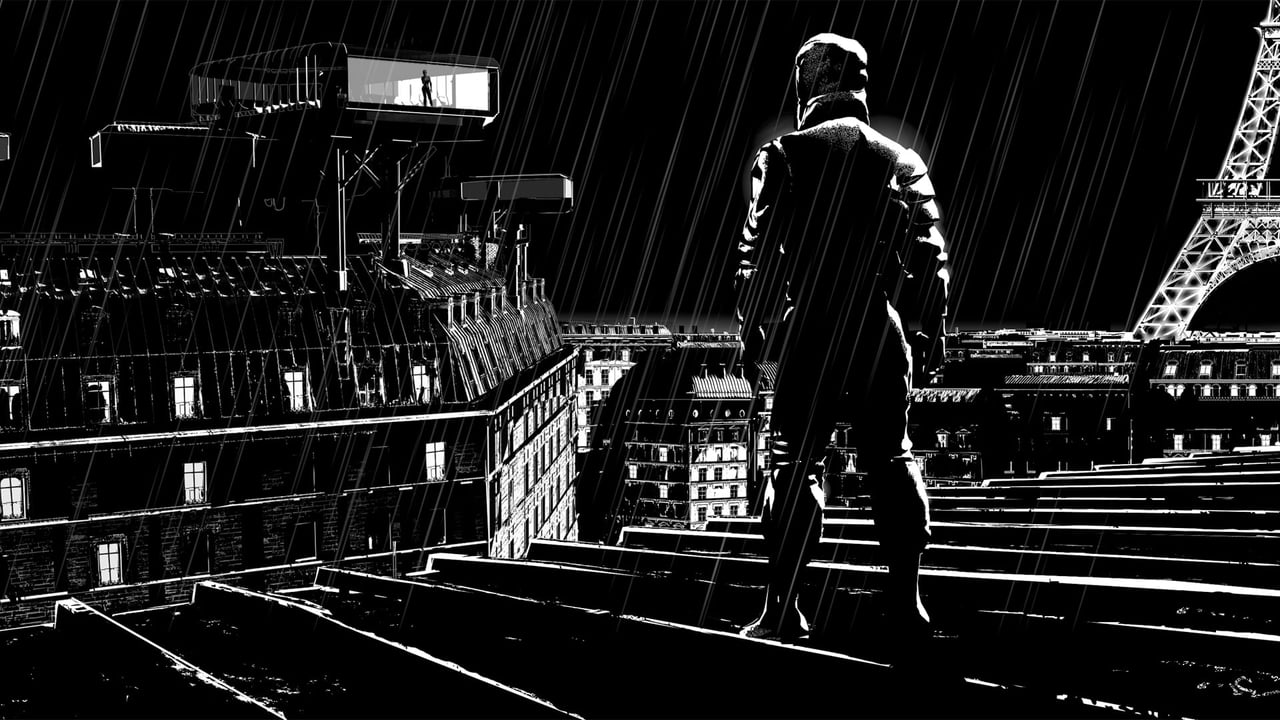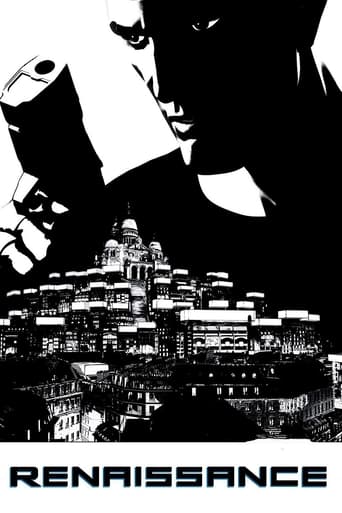

the audience applauded
... View MoreSuch a frustrating disappointment
... View MoreInstant Favorite.
... View MoreFun premise, good actors, bad writing. This film seemed to have potential at the beginning but it quickly devolves into a trite action film. Ultimately it's very boring.
... View MoreRenaissance is a black-and-white animated science fiction film that features a rare visual style in which almost all images are exclusively black and white, with only occasional color used for detail.It centers on a policeman investigating the kidnapping of a scientist who holds the key to eternal life in a futuristic Paris.It has an English cast led by Daniel Craig together with Catherine McCormack,Romola Garai and Jonathan Pryce; and a French cast that includes Patrick Floersheim,Laura Blanc,Virginie Mery and Gabriel Le Doze.It mixes Blade Runner aesthetics with stark, Sin City-style visuals, Renaissance was filmed using motion- capture animation and features extravagant production design by Alfred Frazzani. French director Christian Volckman was at helm for this film.In the labyrinthine streets of 21st century Paris, where every move is monitored and ever action recorded, a mysterious kidnapping sets into motion a catastrophic series of events that could ultimately prove the downfall of civilization. The year is 2054, and the Avalon Corporation has securely woven its way into every aspect of modern living by making youth and beauty the most valued commodity around. Troubles arise in the City of Lights when a high-profile scientist named Ilona is kidnapped, and policeman Barthélémy Karas is assigned the task of solving the case. As his investigation leads Karas down a menacing path where death lurks around every bend, he soon discovers that events that took place in 2006 have cast a dark shadow over the future of humankind.The film attempts to blend sci-fi wonder with stark noir animation, but is often more fun to look at than to watch. It's a testament to the production design that one quickly gets caught up in the story without ever completely losing the "ooh-ahh" factor. Ominous, wall-to-wall music bolsters the appropriately uneasy mood, and the bittersweet conclusion is satisfying. The picture is visually stark and isolated compositions, spiked with high contrast menace, are impressive in their artistic detail. However, the perfunctory plot is rather average .It is a fusion of crime clichés and dystopian futurism, if not exactly original, is nonetheless vigorously engaging.
... View MoreRenaissance is a French-UK-Luxembourg motion-capture animation movie whose story revolves about Detective Karas' investigation to find a kidnapped young scientist working for the Avalon Corporation. It is Paris, year 2054.Renaissance is a detective sci-fi thriller, with a visual style strongly based on classic detective comics, film-noir and German expressionist movies. The film is very artistic, with great dynamic action scenes, and superb lighting, shadowing and texturing. The atmosphere is great, as well as the music. The recreation of Paris in the future is completely believable, as the city still looks like modern Paris, but projected and transformed according to urban development and organisation of the space that have futuristic verisimilitude. The emotional drawing of the characters is good, and it has depth, and the story is intriguing enough. What is more, it poses some interesting questions to the viewer: Is life meaningless without death? Is murder excusable if, by murdering someone, you save humanity from an uncertain future? If the answer is yes, who decides that the future is already written and a person is responsible for it? Despite everything, the movie never lifts up and, despite being a thriller, it is never thrilling enough. All the characters seem lot lack human warmth, despite the story having warmth in it, and that's the result of the poor performances of the actors lending their voices to the characters, especially Daniel Craig, who destroys Karas's character with his dull lazy dubbing. On the other hand, there are too many clichés in the story, from the cigarettes to the femme-fatale/cop affair, to the evil-good approach, while the interesting philosophical questions are never truly explored with seriousness or the challenges of the near future either. Being so, the viewer finds difficult connecting with the characters, despite enjoying the animation or being intrigued about the fate of the kidnapped girl.Renaissance is marvellous from the animation point of view, but the story struggles to grab the viewer's attention. Still has wonderful elements, and is worth watching, even if it is only for its visuals.
... View MoreFor what it is, Renaissance should be treasured. The images here are raw, and the color palette has been stripped down to black, white and three or four shades of gray (maximum). But even with so little, the graphics are highly effective. This picture is bold, and assertive, and it also takes high contrast lighting to the most extreme form. In this animated world, light is so strong that sometimes an individual is nothing more than a haloed silhouette with a pair of eyeballs and lips.Every image is attention grabbing, which certainly allows an open minded viewer to invest in the picture, but What works best about Renaissance is that it can be appreciated as something more than just an elaborate exercise in animation. It also achieves success as a science fiction/thriller in cyberpunk tradition. the plot is rather generic (rogue cop uncovers conspiracy is future utopia society) But this is actually a movie that requires the viewer to pay attention. It's the details that are important.Renaissance is the product of a great imagination, and has plenty to offer for anyone who approaches with an open mind.
... View More2054. Paris is an Escher drawing with people and vehicles scurrying along at multiple levels in an obvious homage to Fritz Lang's Metropolis. Paris is both ultramodern and crumbling into decay. And in the blink between surveillance sweeps, a pretty young medical researcher is kidnapped just after leaving her sister in a seedy nightclub. A tough police captain investigates. Shown in stark black and white, with the gloomy corridors, shadowy alleys and single source lighting characteristic of the most hard-boiled of film noir, comparisons to Sin City are inevitable. But the story owes more to Masamune Shirow and William Gibson than to Frank Miller, as high tech surveillance, near-invisible stealth suits and ruthless super-corporations are as much a part of the landscape as guns and cars. The film never quite generates the doom-laden atmosphere of Gibson's cyberpunk vision, with its tech-heavy marginal characters clashing with industrial types from corporations that all seem to have their own Ministry of Fear, but the viewer definitely gets the sense that future Paris is no Utopia and future science is less than benevolent. And as the police procedural plot line unfolds we are taken into the darker recesses of individual ambition beneath the shiny veneer of Avalon corporation's cultivated PR image. The motion capture process used here produces a look somewhere between B&W comic books and next generation rotoscoping, and is either captivating or intrusive depending on your tastes. Nevertheless, a great visual sense is on display here, and future Paris is filled in down to the tiny details giving the picture a unique look which is in turns both spartan and baroque. Worth a look.
... View More